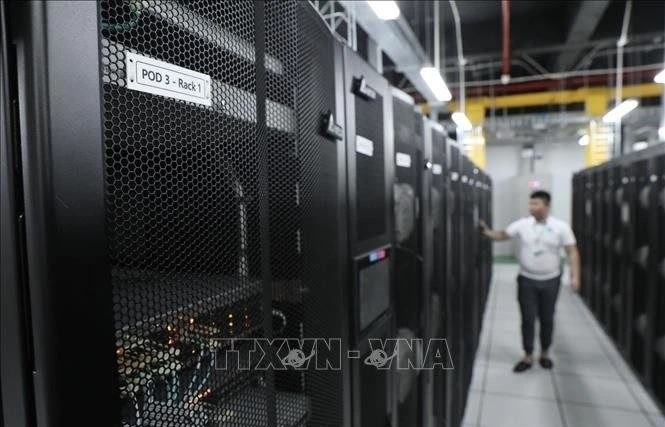Pressure mounts to launch rescue of New Zealand miners
 |
| Photo -AFP |
As the situation became more desperate and the delay increased frustration, rescuers were rushing to deploy seismic equipment and a robot but the continued presence of volatile gases prevented the launch of any operation.
There has been no contact with the miners since the explosion on Friday afternoon and one of only two men to make it out safely has told of an extremely powerful blast that blew him off his feet.
It sounded like a "shotgun blast but much, much louder and more powerful," said Daniel Rockhouse, 24, whose brother Ben is still in the mine.
"I got up and there was thick white smoke everywhere -- worse than a fire. I knew straight away that it was carbon monoxide," he told the New Zealand Herald.
Prime Minister John Key said there was "every chance" the 29 trapped miners were still alive but the wait to search for them was frustrating for their families.
"There's no question from the family members I've spoken to that they are feeling extraordinary high levels of fear and anxiety and frustration," Key told a media conference.
"But we owe it to the men underground that in undertaking the rescue we do so in a way that doesn't endanger their lives any further."
An army robot was being rushed to the mine in a remote area on the West Coast of the South Island but it would have to be modified to ensure it did not ignite gases.
The robot, with a camera, would initially go into the tunnel about 1.5 kilometres (one mile), over halfway to where the miners are believed to be, "to give us an idea of what we're looking at," said police superintendent Gary Knowles.
But Knowles, who is overseeing the rescue operation, could not say when the robot would be ready.
"As soon as we can get it in there we will, bearing in mind this has to be a safe environment so we don't create another spark... they (the army) are upgrading the robot so it doesn't create a spark."
Grey District mayor Tony Kokshoorn said the region was "in limbo" as they waited to hear the fate of the miners.
The families of the men needed to hear "there is some movement forward," he said.
"Every hour and every day that goes by we have to face the facts that they can't stay down there indefinitely."
Samples of gas conditions in the mine are being taken every half hour and rescuers say they need a sustained downward trend before specialist rescue teams could enter.
They need to be certain of several hours of clear air as it will take two hours for an initial reconnaissance team to reach the area where the missing men are.
"This monitoring will allow first responders the earliest opportunity possible to judge when it is safe enough to allow teams to enter the mine and bring the men out," police response coordinator Kelvin Powell said.
"This operation is a fine balancing act. We know families and friends are anxious to hear news of their loved ones and all response personnel are totally focused on bringing the men home."
Tests have also detected the presence of fire in the mine but it was not known if it was affecting safe areas where the rescuers hoped the miners were sheltering with compressed air and water supplies.
The weather in the remote area on the west coast of New Zealand's South Island was fine Monday, after two days of low cloud and drizzle. This would assist the drilling of a bore hole into the mine, to take a gas reading from near where the miners are.
Police have also released the names of the 29 men but Knowles said whether they had survived the blast remained the "six million dollar question".
Knowles said American specialists they had spoken to suggested using seismic equipment to listen on top of the ground for any movement in the mine and "we will be, if possible, deploying that equipment".
What the stars mean:
★ Poor ★ ★ Promising ★★★ Good ★★★★ Very good ★★★★★ Exceptional
Latest News
More News
- Tropical storm Trami leaves at least 24 people dead in Philippines (October 24, 2024 | 17:36)
- Singapore grants conditional approval for solar power import from Australia (October 24, 2024 | 17:27)
- ASEAN digital economy set to reach $2 trillion by 2030 (October 22, 2024 | 15:08)
- Thailand asks Laos to waive visa fee at border checkpoints to boost tourism (October 21, 2024 | 17:23)
- Laos pledges to continue efforts to empower girls (October 21, 2024 | 17:17)
- Chinese electric vehicle maker to build plant in Indonesia (October 21, 2024 | 17:12)
- Vietnam Elevator Association introduces Elevator Safety Application to the world (October 18, 2024 | 09:00)
- A taste of the future - the go-to spot at the Worldchefs Congress & Expo 2024 (October 15, 2024 | 16:11)
- Jakarta to impose household waste levy (October 14, 2024 | 16:49)
- China, Laos plan to build connectivity development corridor with Thailand (October 14, 2024 | 16:19)




















 Mobile Version
Mobile Version